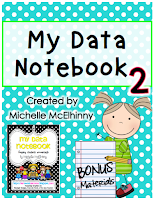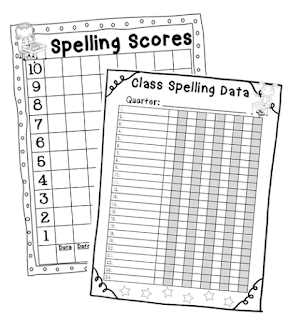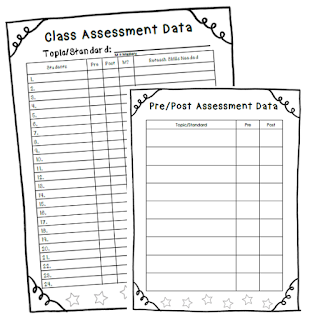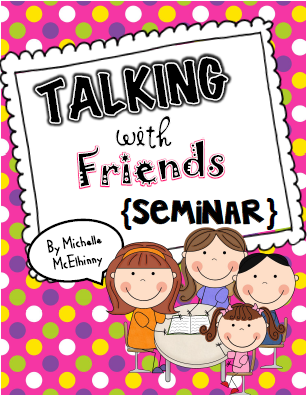A few years ago I created a data notebook that I've been using in my classroom. Since then, I have switched schools and several assessments have changed. I have seen myself revising the pages and wished that I had other pages to record data for other topics. So this summer, I dedicated my time to creating a new data notebook to compliment my previous data notebook. Click on the picture below to find it on TPT.
The main purpose of using data notebooks is to increase student achievement. After giving my students their baseline assessments, we begin using the data notebooks to record the results and start setting goals. There are several choices for recording literacy and math data. You can choose between beginning/middle/end, quarterly, or every other month.
Depending on what program your school uses for spelling, you may be able to use the spelling graphs for different things. I have used these with regular spelling words assessments and with spelling assessments for words their way.
Students can keep track of the topic they are studying and the scores they received from their pre/post test. Choose the data from pre assessments, observations, or
other resources to see where improvements need to be made. You can decide how long students need
to work toward the goal and when to check in to see if the goal has been met. After the post test, you will record the results on your form and decide which skills you need to reteach.
Once
students begin to gather data, they will record their progress in their data
notebooks using graphs or other recording sheets. Students can reflect on their assessments by
writing about which standards they mastered and which ones they still need to
work on. They can create a project to
prove they have mastered the standards or they can take a video recording.
Have an awesome time implementing data notebooks!
Most importantly, when implementing
student data notebooks, it’s important
to keep everything organized so they can
take ownership. Choose which organization method works best for you (I
like binders!). Introduce your data notebooks, let students color or
decorate their front cover, and have them fill in their baseline data.
Start out small! Don't overwhelm yourself or your will overwhelm your
students.




















